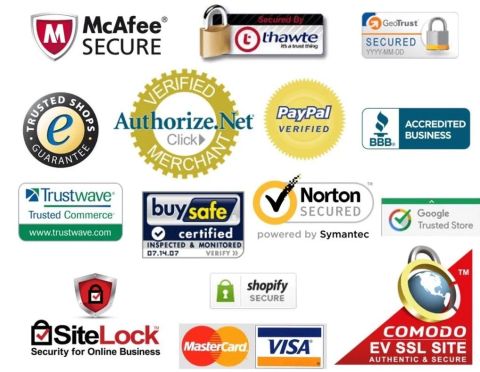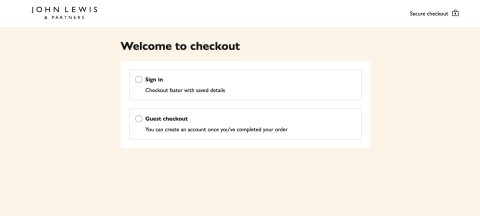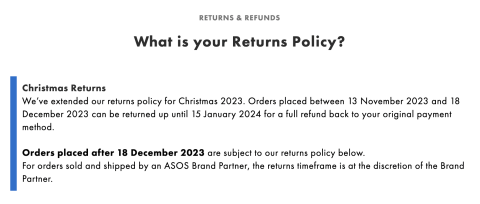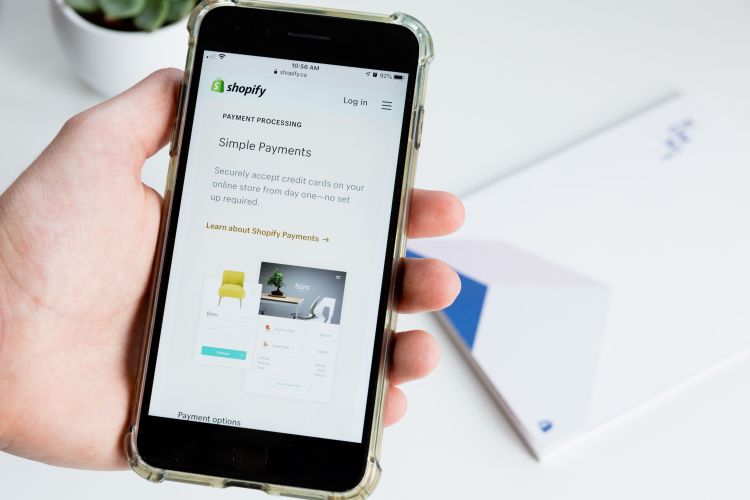Table of content
8 tips to reduce cart abandonment
Tip 1: Display trust badges
Tip 2: Optimise your website for mobile
Tip 3: Simplify the sales funnel
Tip 4: Offer ample customer support options
Tip 5: Create exit-intent triggered pop-ups
Tip 6: Offer guest checkout options
Tip 7: Be clear about your return and refund policy
Tip 8: Be clear about shipping costs and delivery times
8 tips to reduce cart abandonment
A Baymard Institute study showed that the average cart abandonment rate is 70.19%, meaning seven in ten customers who place products into their shopping carts or baskets don’t complete their purchase in the checkout section.
Emil Kristensen, CMO and co-founder of pop-up builder Sleeknote, said: “I can say from experience that it’s incredibly frustrating to successfully move a shopper through the sales funnel and create offers that are enticing enough to pique their interest, only to inevitably lose them at the point of purchase.”
The most cart abandonment happens from a mobile device (85.65%), followed by tablets (80.74%) and desktops (73.07%).
However, there are multiple steps you can take to reduce cart abandonment and improve your customers’ overall shopping experience using user experience (UX) design. Here are eight:
Tip 1: Display trust badges
19% of shoppers abandoned their cart because they didn’t trust the site with payment information such as their credit card details.
You can display trust badges on your brand’s home page or during the checkout process to enhance credibility and build trust with shoppers. This will stop them from being scared to hand over their personal information and decrease the likelihood of abandoned carts.
Trust badges can include:
- Guaranteed Safe & Secure Checkout badge – The most crucial trust badge is the secure checkout badge, given when your brand signs up with a company that provides a Secure Socket Layer (SSL) certificate. This badge indicates that your checkout process can be trusted as personal and payment information is encrypted.
- Accepted payment badges – This is a visual list of the logos of the payment types you accept, such as Mastercard, Visa, PayPal, American Express and Klarna.
- Third-party endorsements – Better Business Bureau (BBB) Accredited Business and Amazon Best Seller badges are third-party endorsements which require you to apply, be reviewed, and be approved. However, they are an excellent way to show your business is credible.
- Money-back guarantee badges – The free-to-use money-back guarantee badge is very effective for stopping cart abandonment as it eliminates the risks of buying from an online store.
- Free shipping and free returns badge – Again, by letting your customers know they can return any products ordered without fees, you remove some of the online ordering risks.
- Customer ratings and reviews – Include your brand’s Trustpilot rating and any helpful customer reviews. In addition, if you can, use reviews from trusted industry experts and influencers.

(Image Source: Shopify)
Tip 2: Optimise your website for mobile
Unlike traffic from tablet devices, which make up just 3% of ecommerce sessions, mobile traffic accounts for over two-thirds of all ecommerce sessions (68%).
To ensure a consistent ecommerce experience across devices, design your website to be mobile-friendly so the many customers using smaller screens don’t encounter any issues.
You must also ensure your website is fast-loading and secure, as these factors affect the user experience. You can test your website’s performance using tools such as Google PageSpeed Insights, Mobile-Friendly Test, or MozBar.
Tip 3: the sales funnel
Baymard Institute also claims 18% of customers abandoned their cart because the checkout process was too long or complicated.
For most checkouts, it’s possible to reduce the number of form elements shown to shoppers during the default checkout flow by 20-60%. Forms collect customer data such as name, email address, shipping address, and payment details.
The quicker and smoother a shopper can go from finding a product to placing their order, the less likely they are to abandon their cart because they got distracted or things got too complicated.
Tip 4: Offer ample customer support options
Some shoppers find comfort in the availability of customer support. These types of support may be in the form of:
- An FAQ page answering common questions about delivery times, account issues, clothes sizes and more. This gives UX writers the chance to show off the brand’s personality.
- Chatbots, powered by human employees or artificial intelligence (AI) robots, are an excellent way for customers to get immediate support.
- Contact forms or contact details so customers can call, email or message on social media to get answers to any questions or queries.
- Call-back forms so customers can request a call from your team to answer any questions or queries. These pop-ups should highlight the advantages of dealing with an experienced employee.
Adding any of the above support options gives shoppers the confidence to continue checking out even if they never use the support available.
Tip 5: Create exit-intent triggered pop-ups
By displaying a pop-up just as a shopper intends to leave, you grab their attention and win them back. You can save up to 13.5% of abandoned sales if you encourage customers to finish their checkout by offering them a discount code in an exit-intent triggered pop-up.
In addition, you can convert up to 7% of abandoning visitors into email subscribers if your exit-intent triggered pop-up asks them to enter their email address for a discount on their next purchase.
However, remember that you want to offer such a great user experience that most shoppers never even see your exit-intent pop-up – as they don’t try to leave!
Tip 6: Offer guest checkout options
Baymard Institute survey results also showed 25% of shoppers abandoned their cart because the site wanted them to create an account.
Not everyone wants to sign up to your website to purchase products, so adding a guest checkout option can be a clever and quick way to stop abandoned carts. By doing this, you remove barriers and save customers’ time by providing a hassle-free and simplified user experience.
For example, when you head to checkout online at John Lewis (see picture below), the department store offers two options: sign-in (this leads to creating an account if you don’t already have one) or guest checkout (for those who don’t want to create an account).

Image Source: John Lewis
This is a good example of UX writing as it offers clear actions to the consumer, as well as suggestions that suit their needs. Including an explanation of each option, such as ‘you can create an account once you’ve completed your order’, provides the customer with the relevant guidance to go to the next step of the checkout process.
Tip 7: Be clear about your return and refund policy
Baymard Institute also claims 16% of shoppers abandoned their cart because the brand’s returns policy wasn’t satisfactory.
Creating a refund and return policy that is fair, transparent, and easy to understand will provide shoppers with the confidence to make a purchase, knowing they have the option to return if the product doesn’t meet their expectations.
A return and refund policy should be easy to find at various stages of the shopping process, including the product pages, shopping cart, and checkout page. UX writers should use precise language throughout the policy to make sure that everything is clear about what you offer.
Your brand’s return and refund policy should clearly state:
- Return fees – Do customers have to pay a fee, or are returns free? For example, online clothes retailer Shein offers the first return label for free. However, if customers later decide to return items from the same order, a £2.50 fee is deducted from the refund.
- Return methods – Where can your customers go to return their purchases? For example, Evri, Royal Mail, Inpost Lockers, Asda to you, Yodel, etc.
- Processing times – When will the customers receive their refund? How many days after the return is processed will the money arrive in their bank account? UX writers should consider using useful data visualisations here, for example, “90% of customers receive their refund in 5 working days”.
- Information about what you can’t return – Can your customers return sale items, underwear or clothes items that the tags have been taken off?
- Time frames – How many days do your customers have to return their purchase(s)? 14, 30 or 45 days is a typical return window. In addition, brands such as ASOS allow a longer time frame over the Christmas period.

Image Source: ASOS
Tip 8: Be clear about shipping costs and delivery times
Baymard Institute’s data shows 47% of shoppers abandon their carts because of extra costs such as shipping, whilst 24% of shoppers abandon their carts because delivery was too slow.
Product pages are a great place to highlight shipping costs and delivery times so customers know what to expect before they reach the checkout page.
We understand that it is sometimes hard to calculate delivery costs and times before the customer enters their shipping address. However, UX writers should try to include visual estimations such as ‘3-7 working days’ and ‘£2.99-£5.99’.
Your website’s page is a great place to insert banners advertising free delivery for orders over a certain amount or time-sensitive shipping discounts such as ‘free next day delivery if you order before 2pm’.
10. Conclusion
In the fast-paced and competitive world of ecommerce, abandoned carts and almost-lost sales can have a significant impact on your brand. However, by implementing the above steps during your UX design process, you can stop shoppers from abandoning their carts and maximise your conversions.
Remember to continuously optimise your methods, be on the ball with customer support, and keep all your brand’s contact details and policies current.

